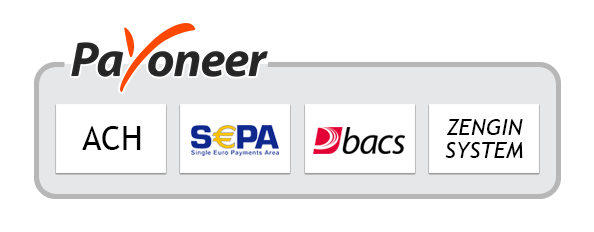Market Overview
The cooling tower market has experienced consistent growth in recent years, driven by the increasing demand for cooling systems in various industries, including power generation, HVAC, petrochemicals, and manufacturing. Cooling towers play a crucial role in maintaining optimal temperatures in industrial processes, thus ensuring efficiency and minimizing energy consumption.
According to the report, rapid industrialization, the expansion of manufacturing facilities worldwide, and growing demand for energy-efficient cooling solutions are among the primary factors driving the growth of the cooling tower market. In addition, the increasing focus on environmental sustainability and the adoption of green technologies, coupled with stringent regulations on water usage and the need for water conservation in cooling processes, have propelled the market forward.
Stakeholders in the cooling tower market, including manufacturers, suppliers, and distributors, stand to benefit from the rising demand for cooling systems. They can capitalize on this growth by offering innovative, energy-efficient, and environmentally friendly cooling tower solutions to cater to the evolving needs of different industries. This will result in increased sales and improved customer loyalty.
Want a bigger picture? Try a PDF sample of this report now @ https://market.us/report/cooling-tower-market/request-sample/
[See the complete table of contents and list of exhibits, as well as selected illustrations and example pages from this report]
The COVID-19 pandemic and its subsequent supply chain disruptions and temporary suspension of production across multiple industries and verticals took a heavy toll on the market. After the pandemic outbreak, several industries that require cooling towers experienced declines in production. For instance, chemical production fell by 3.6% while oil and gas output declined by 6.4% in 2020. In 2020, both HVAC and power generation industries experienced revenue declines that hindered cooling tower adoption. Nonetheless, analysts anticipate a gradual recovery in 2021 as manufacturing units reopen and operations resume.
The growing need for cooling in data centers is expected to fuel market growth. Adequate cooling is essential as the IT infrastructure housed there generates excessive heat, making cooling towers an efficient way of maintaining optimal temperatures while using less energy consumption. With several upcoming hyper-scale constructions expected in this booming sector, growth prospects for cooling tower market players appear promising.
Rapid industrialization, rising disposable income and globalization are the driving factors behind an immense demand for electricity worldwide, particularly in developing economies. This increase in electric power plants is projected to fuel growth in the cooling tower market as they generate enormous amounts of heat which necessitates their use as cooling towers to remove it and ensure safer operations at these plants – thus fuelling demand over the forecast period.
Modern cooling towers provide optimal cooling while featuring eco-friendly features. Components such as louvers, drift eliminators, air inlet, loads, fans, nozzles, motor and fills have undergone technological advancements to make them energy-efficient. Cooling towers promote water conservation by conserving resources by using recycled water for cooling purposes – plus efficient evaporative systems prevent excess loss in moisture content.
Drivers
– Rapid industrialization and the expansion of manufacturing facilities worldwide.
– Growing demand for energy-efficient cooling solutions to reduce energy consumption and costs.
– Increasing emphasis on environmental sustainability and the adoption of green technologies.
– Stringent regulations on water usage and the need for water conservation in cooling processes.
Restraints
– High initial investment and maintenance costs associated with cooling towers.
– The availability of alternative cooling solutions.
Opportunities
– Development of advanced cooling tower technologies, such as hybrid cooling towers and smart systems, to improve efficiency and reduce environmental impact.
– Expansion into emerging markets with growing industrialization.
– Retrofitting existing cooling towers with energy-efficient components and designs.
Challenges:
– Compliance with stringent environmental regulations and emission standards.
– Managing the water quality and preventing the growth of harmful microorganisms in cooling towers.
Key Market Segments
Type
- Evaporative Cooling Tower
- Dry Cooling Tower
- Hybrid Cooling Tower
Application
- Chemicals
- Petrochemicals and oil & gas
- HVACR
- Food & beverages
- Power generation
Key Market Players included in the report:
- Baltimore Aircoil Company
- Enexio
- Hamon & CIE International SA
- Spig S.P.A
- SPX Corporation
- Bell Cooling Tower
- Brentwood Industries
- Johnson Controls
- Paharpur Cooling Tower Limited
- Star Cooling Towers
Recent Development
In July 2021, Baltimore Aircoil Company Inc. acquired Eurocoil Spa (Italy), a prominent refrigeration manufacturer and European commercial. This attainment has further reinforced its position in the global cooling market.
In December 2020, Hamon acquired ESINDUS (Spain) involved in the cooling business in the Iberian Peninsula, Mexico, and South America. Hamon & Cie goal to strengthen its geographic presence in Asia, EMEA, and North America through this acquisition.
FAQs
1. What are the key factors driving the growth of the cooling tower market?
Rapid industrialization, demand for energy-efficient cooling solutions, focus on environmental sustainability, and stringent regulations on water usage.
2. What are the main challenges faced by stakeholders in the cooling tower market?
Compliance with environmental regulations and managing water quality in cooling towers.
3. What opportunities exist for stakeholders in the cooling tower market?
Development of advanced cooling tower technologies, expansion into emerging markets, and retrofitting existing cooling towers with energy-efficient components.
4. How do cooling towers contribute to energy efficiency and environmental sustainability?
Cooling towers help maintain optimal temperatures in industrial processes, minimizing energy consumption and reducing greenhouse gas emissions associated with cooling systems. They also facilitate water conservation by recirculating and reusing water in the cooling process.
Discuss Your Needs With Our Analyst
Please share your requirements with more details so our analyst can check if they can solve your problem(s)





